
By William Van Zyl. Published January 2022.

Table of Contents
Pieter Grabbe van Zyl (Zijl) also known as PG.
Pieter Grabbe – Anglo-Boer child hero – was born on September 30, 1888. He joined the Heidelberg Kommando in 1901, during the Anglo-Boer War in South Africa (1899 to 1902). He would have been just over 12 years old when he signed up. For serving the ‘Kommando’ at that young age, he is classified as a ‘Penkop.’
What is a Penkop?
‘Penkop’ is an Afrikaans word meaning a young male impala. An adult male has lyre-shaped horns.
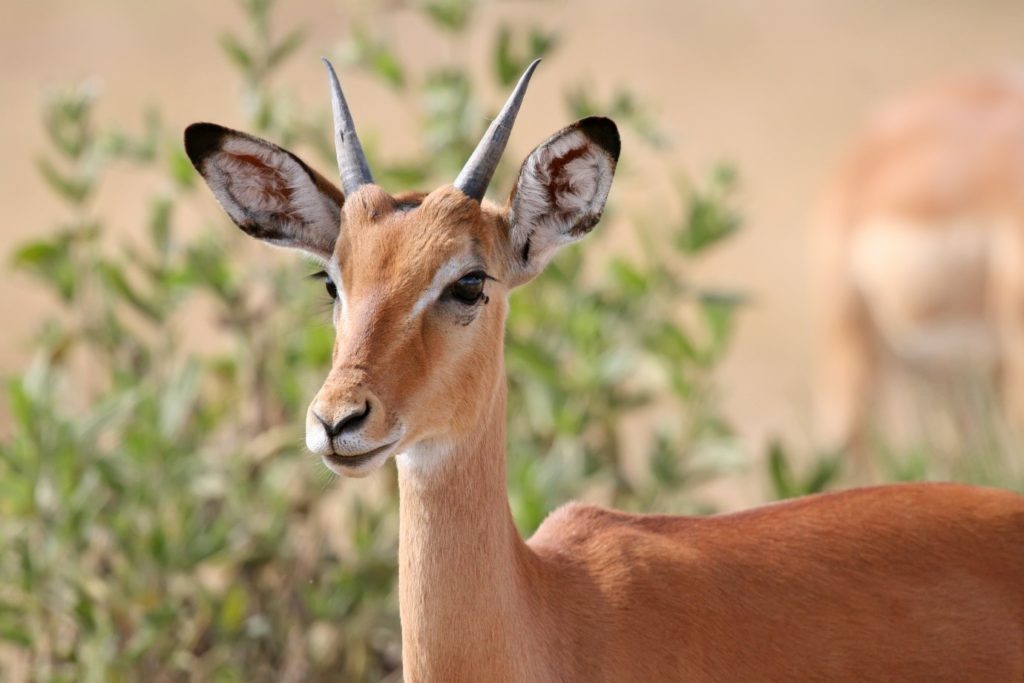
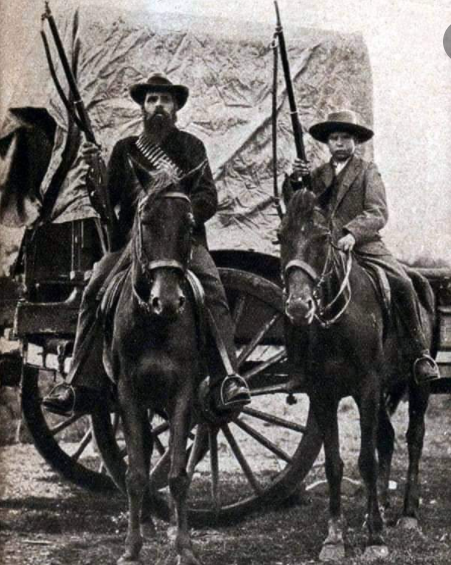
Why is PG a war hero?
P.G., as a young fighter – ‘enrolling’ at the very young age of 12-years – he never surrendered during the Boer war. Eventually, he signed the peace settlement in 1902 – attaining the distinguished title of “Bittereinder”.
What is a Bittereinder?
The Bittereinders – or irreconcilables – were a faction of Boer guerrilla fighters resisting the forces of the British Empire in the later stages of the Second Boer War. By September 1900, the conventional forces of the South African Republic and the Orange Free State had been largely defeated by the British army.
In P.G.’s medal application form – “Vorm B” ABO – he mentions that he participated in several field battles – called “veldslagen.” He was involved in battles at Vaalkop, Ysterkop, Ermelo, and Heidelberg.
These veldslagen were in the Transvaal and Orange Freestate regions.

In a letter – in 1948 – Pieter states for his “Oudstryder” pension that his father was Jacobus Johannes van Zyl.
What is an oudstryder?
A veteran who fought on the side of the Boer Republics, especially in the Boer War (1899–1902). Hence, in extended use: a veteran of any war.
Origin: 1940s. From Afrikaans oudstryder from Dutch oudstrijder veteran from oud + strijder warrior (from strijden to fight + -er).
Pieter’s father was J.J. van Zijl. At the age of 31 years – on 27 February 1900 – his father was captured at Paardeberg. J.J. was from the Klerksdorp area and was interned at the Deadwood Camp, St Helena – POW – Prisoner of War #4310. In these situations, the Penkoppe almost always accompanied their fathers on Kommando.
Credit: Pierre Rossouw
*Some of the above information was provided by researcher Pierre Rossouw – a South African living in the U.K. Credit also to Pieter (Pietertjie) Van Zyl, residing in South Africa, who passionately are doing research and have assited with the development of the Van Zyl Stamboom. Thank you, Pieter!
Life for P.G. after the war:
Pieter eventually went on to work on the gold mines in Johannesburg and lived to a good old age of 73. His last recorded address was 118 Claim Street, Hillbrow, Johannesburg. He would marry twice, with 6 children from his first wife (Anna Catherina Elizabeth) and two from his second wife (Elsie Sophia, nee Lotter).
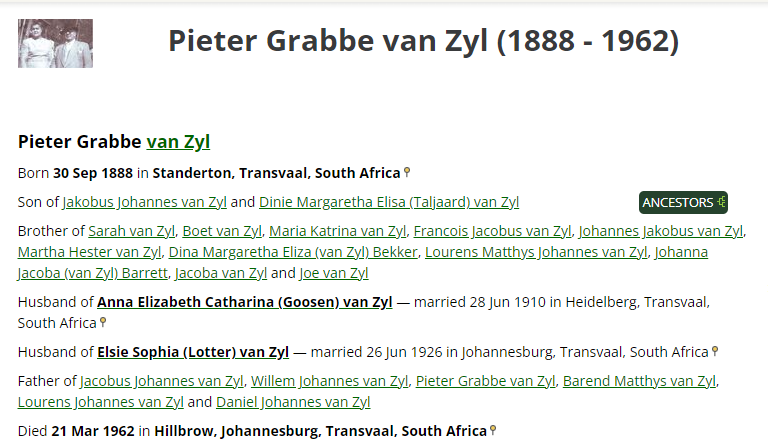
Pieter Grabbe the ‘Penkop.’
Grandpa P.G. moved like a statesman, especially when he was dressed up. His role models were the Great South African statesmen of his time like JBM Hertzog and Louis Botha. He lost his eye – not in the South African Boer War. That is another story – he lost his one eye when he was attacked in a Gold Mine by a native. He was in his thirties when the unfortunate incident occured. He was a headstrong person with the will of a wildebeest. The loss of his eye didn’t stop him though, he adapted and wore a prosthetic eye for the rest of his remaining life. Under that strong personality was more loyalty than I could have ever guessed. He was a distinguished Penkop in the Anglo Boer War in South Africa.
I never had the opportunity to talk to him about the war medal he had received. He must have been very courageous fighting the English as a young, vulnerable, and inexperienced Kommando member. The award shown in this article is evidence that he had been a ‘Penkop.’ He’d earned every ounce of his war medal. He was a tenacious young boy!

After reading the blog posts on Facebook on The Van Zyl (Van Zijl) Stamboom page, I have adapted one of my poems to include the brave and courageous Penkop Pieter Grabbe Van Zyl.
POEM: My Heritage and the Future
After writing this personal poem – ‘I come from …’ you will not believe how good I felt afterwards! While delving into the great memories from the past, the expression of my feelings, thoughts, and emotions had released some national pride for me. As I saw the text and images in front of me – documented past war experiences of Pieter Grabbe – my self-worth increased. Here is the poem.
I COME FROM A LAND OF THE BRAVE
I am from a long lineage of brave, courageous, and resilient people:
Piet Retief, Louis Trichardt, Racheltjie De Beer, Japie Greyling, Penkop Pieter Grabbe, Archbishop Tutu, and Nelson Mandela.
Believing in themselves and a Higher Force – making the impossible possible
I come with a knowledge of the ‘Anglo Boer War’ and ‘The Groot Trek.’
I come from the Apostolic Faith Mission of South Africa
I come with the understanding that we are conquerors
I come with conviction “His rod and His staff, they comfort me…”
————————0————————-
I come from PG Van Zyl, Ella, Charlie, and Nena Van Zyl
Brave and resilient grandparents
and, Hardworking, loving and caring parents
I come from Saaiplaas and Harmony – Virginia – in the Freestate
Where the large wheels of Harmony Gold Mining Company used to spin
Where Dad worked many long hours – toiling – so we could enjoy the very best
—————————-0———————————
I come from a team of young boy’s scouts that played in dugouts
We dug trenches, covered them and produced secret codes
I am from a place of extravagant code: some hidden and some deciphered
As a young boy, my mind was filled with grand thoughts and ideas
I am from a happy, sheltered and carefree place
————————–0———————–
I acknowledge the Battle of Bloodriver
I am from the covenant-keeping people
A proud visitor of the Voortrekker Monument
I am from the Kakebeenwa culture – full of faith and hope!
I am a believer in the promised land – His Kingdom
I am from a proud Afrikaner lineage of fighters and believers
————————–0——————————
I am from Aotearoa now, where God defends New Zealand
Here we honour the ANZAC forces who sacrificed their lives in World War 1
So we can live free.
“Let our love for Thee increase, May Thy blessings never cease,
Give us plenty, give us peace, God defend our free land.”
Now I am from this land where people care; a land of more than enough
A lush green land, a moist and blessed place
I am from New Zealand – the land of the long black fern.
END
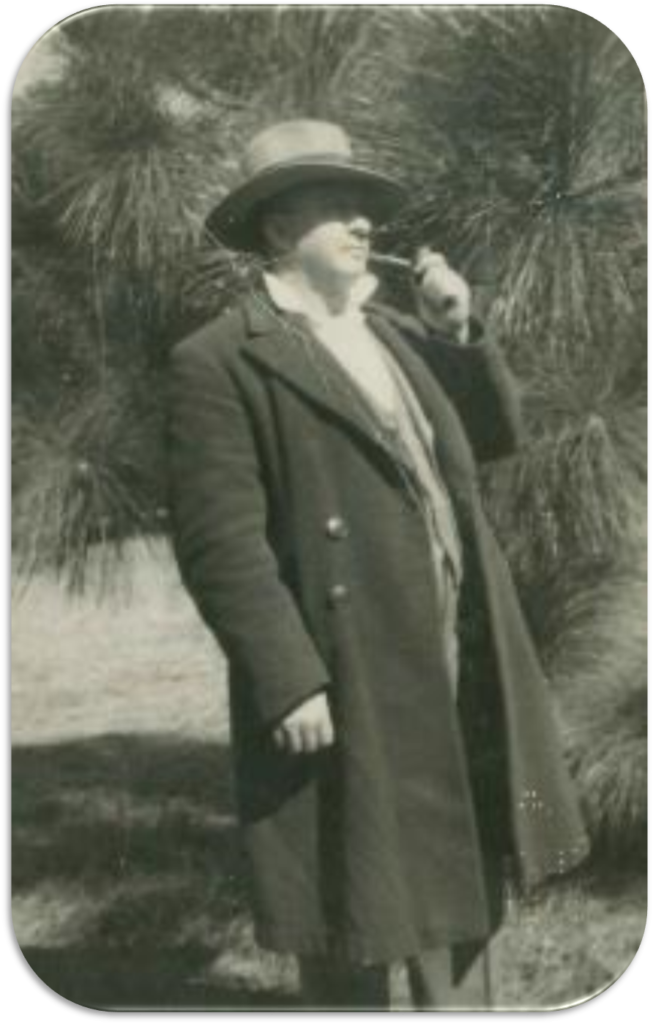
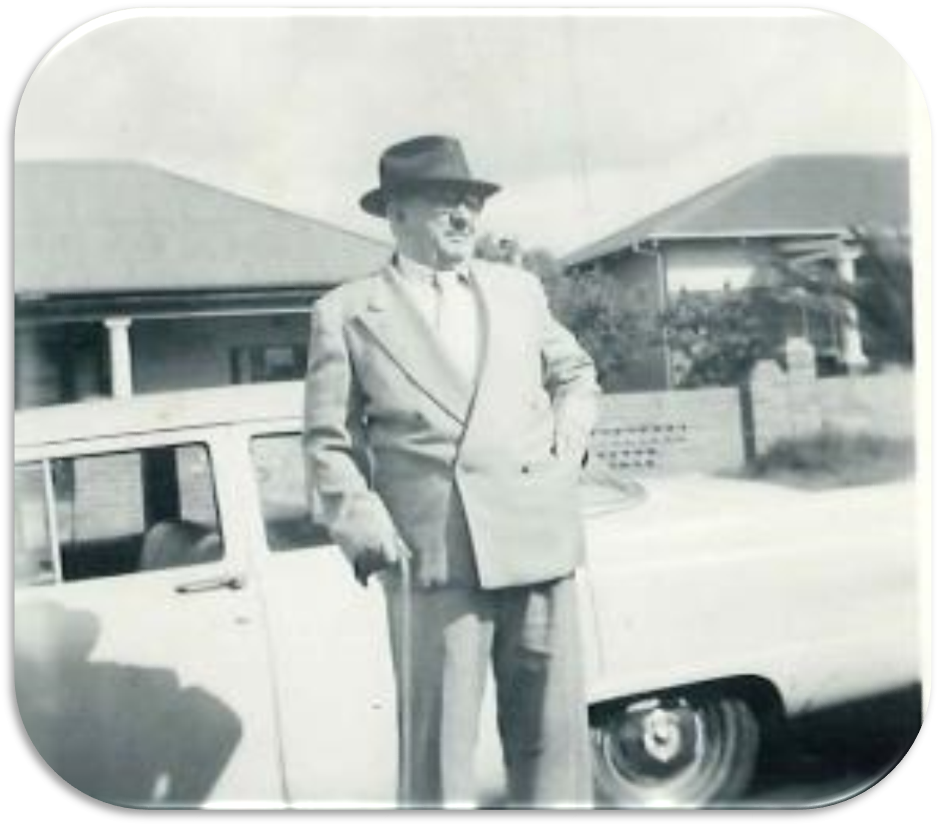
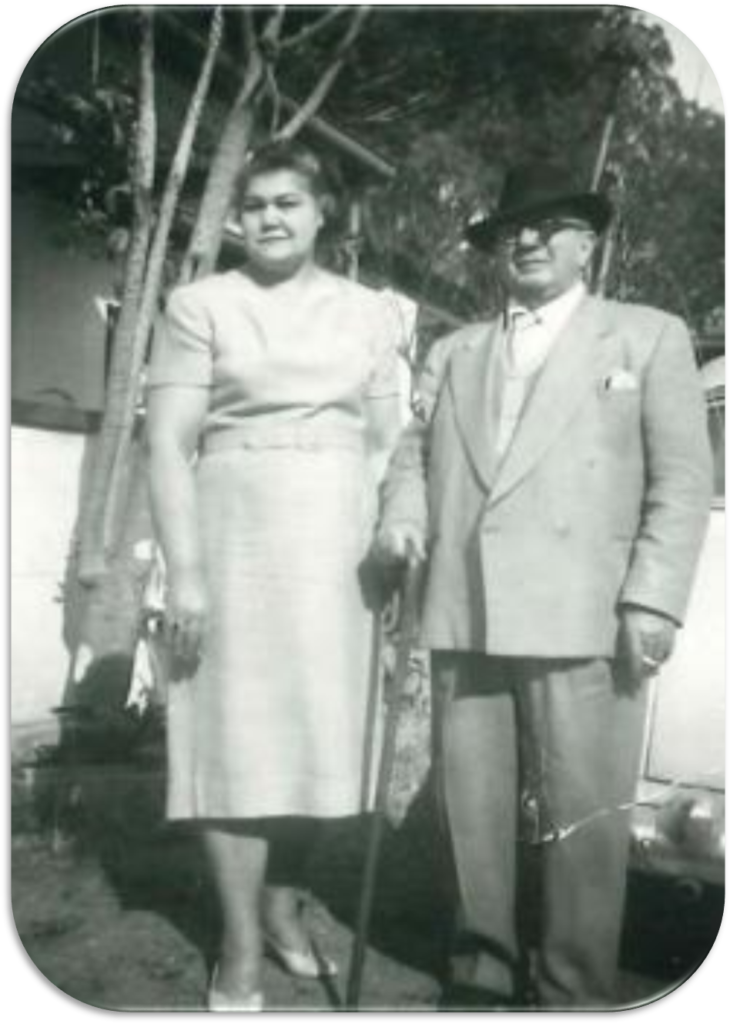

RESOURCES- FACEBOOK
Overview: Pieter Grabbe as a young penkop.
- Pieter Grabbe van Zyl did not come from a wealthy family; they did not own their own farm but instead lived and worked on another’s. These people were known as “bywoners” as many farmers simply had no access to additional labour outside their direct family. His father and uncle resided on the Wildespruit farm in the Heidelberg area. The Van Zyl’s chose this life for themselves despite the promise of wealth from Kimberley’s diamond fields (1871) and the discovery of the world’s richest gold deposits in Johannesburg (1886).
- Their journey to the hostile interior, over the Vaal River, had never been about seeking wealth (no mineral discoveries at that time); instead, it was a deep desire for freedom, free from European colonial rule. Their progenitor to Africa was Willem Willemsz van Zijl, who arrived at the Cape as a “Vryburgher” (free citizen), with his wife and two children, in 1697 aboard De Drie Croonen. Their yearning for freedom would see them travelling from the Cape, along the coast to the eastern frontier and again inland over the Orange and Vaal Rivers for their own Republic (Jacobus van Zyl at the Battle of Blood River on December 16, 1838). A journey over a few generations, by foot and ox-wagon – covering some 1,800 km – much paved by the perils of hostile natives, rugged terrain, wild animals, severe weather, sickness and death.
- Before the outbreak of the second War of Independence with Britain, life on the farm must have been pretty uncomplicated. Heidelberg, a name shared with a town in Germany, developed as a trading town from 1862 and even briefly became the capital of the Zuid Afrikaansche Republiek (1880 to 1883). However, their tranquillity of life was soon to change dramatically with the outbreak of the second Anglo-Boer War, declared on October 11 1899.
- Pieter only joined the war on 15 Mei 1901 – very much later in the campaign (19 months later). It was not that he was avoiding it; in fact, the Republican Law would not allow it. At 12, he joined his father (Jacobus Johannes van Zyl) in the Heidelberg Commando. Sadly, they would both never meet or be able to say goodbye to his sister, Jacoba, as she died three months after entering the British Concentration camp (aged 6 months). Boys were technically not allowed to join under the Republics Constitution (ZAR: Law 2 of 1896, article 117-119, Martial Law 20 of 1898, article 3 / OVS: Martial and Commando Law 10 of 1899, article 28), which stated all abled men between the ages of 16 and 60 had to report for service in the event of war!
Credit: Van Zijl Stamboom – Facebook Page.
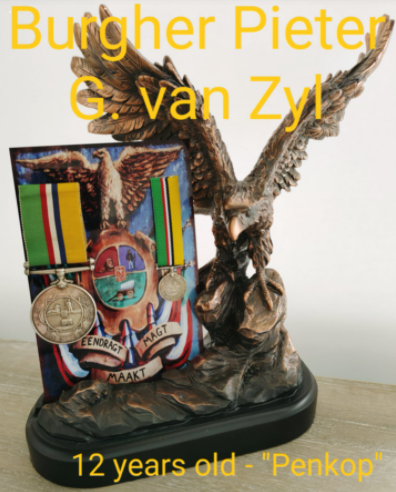
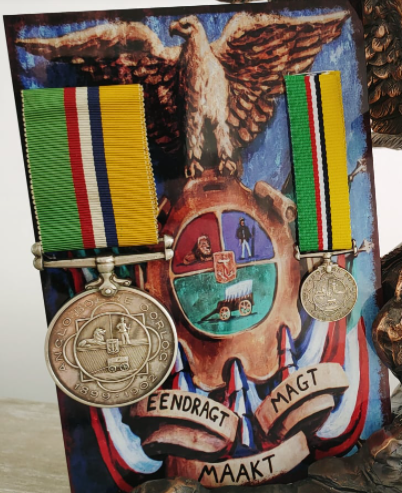
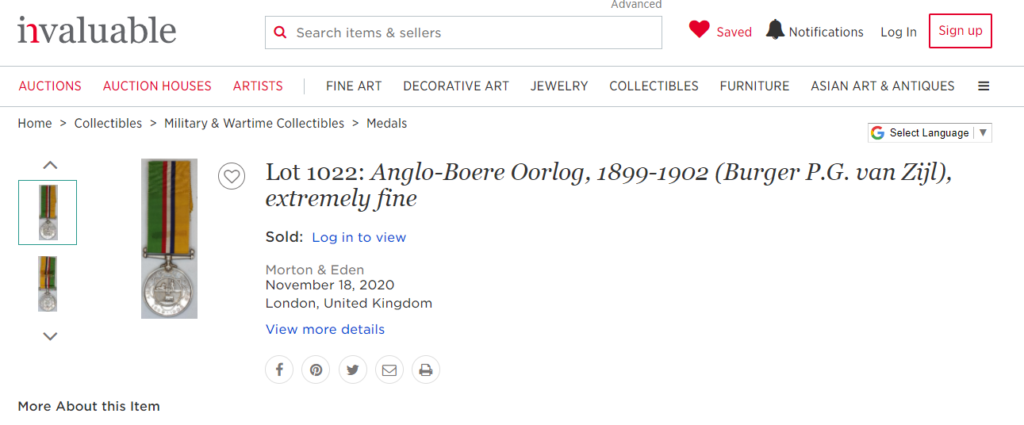
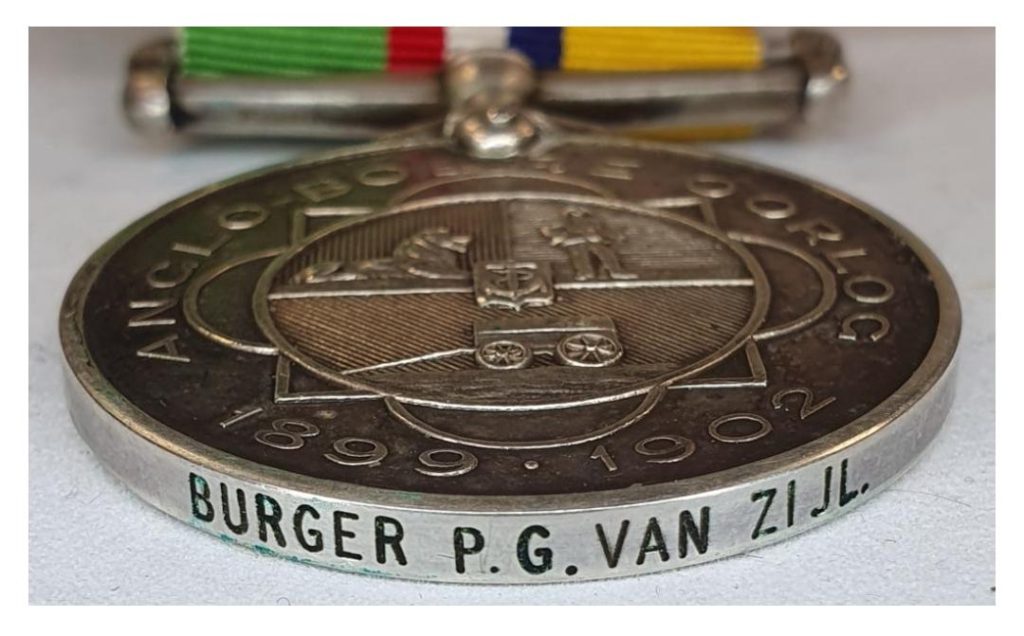
- At 12 years old (born September 30 1888), these boys were referred to as “Penkoppe” – alluding to a young wildebeest (or Impala) buck with pen-like horns showing that it was still in the process of growing up and not yet mature, boisterous and fearless. The boys were typically not allowed to directly partake in battles. Their many duties included: grooming and feeding horses, setting up and breaking down camp, collecting firewood, preparing food and any other supporting responsibilities.
- However, some records demonstrate that boys did indeed step forward and actively participate in the war to defend against the onslaught of the enemy. Many left home without consent to join the Kommandos. However, they had to first convince their peers to fight before being allowed. Pieter records in his medal application form that he partook in at least 4 battles (veldslagen/ gevechten), namely: Vaalkop, Ermelo, Boesmanskop and Heidelberg.
- Of note is that not only was Pieter a minor, but he never surrendered during the war and stayed with his Kommando to the very end, personally signing the peace declaration on June 6 1902, in Heidelberg. Therefore, he can proudly add to his “Penkop” accolade that of being a “Bittereinder” – a truly remarkable achievement for this young Republican.
Credit: Van Zijl Stamboom – Facebook Page.
PENKOP BRAVERY
The term Penkop was not rigorously applied as boys up to the age of 20 years were at times considered to be Penkoppe as well. The well-known Reitz boys: Jack (12yo), Arnt (16yo), Deneys (17yo) and Hjalmar (20yo), all took an active part in the war.
Boys did, in fact, join together and form their own Penkop Commando’s. Commandant Gideon Scheepers had a large group of Penkoppe in his ranks, renowned for their bravery and for being a real thorn in the flesh of the British. When he was captured, Scheepers was only 22 years old and had his Adjudant Kareltjie Lehmkuhl aged 16 years.
Even Concentration Camps could not prevent some youngsters from escaping to join the commandos – Pietie de Wet escaped from the Rouxville Camp. After a few days in the mountains near Zastron asked to join the Commando of Willem Diederik Fouche in November 1901. When he approached the Boer Kommando, they threatened to return him to the camp. He protested against the pain of death, and once he proved he was a good shot, he was allowed to remain under the Commando of Willem Diederik Fouche (November 1901). Fouche’s Commando consisted of mainly 200 to 250 Penkoppe and young men who would instead have been shot than not have fought the British. They were recognized by their yellow headbands, while the Commando of Wynand Malan was known by its blue headbands.
Credit: Van Zijl Stamboom – Facebook Page.
Japie Greyling was a child hero in the Anglo Boer war – a true Penkop.
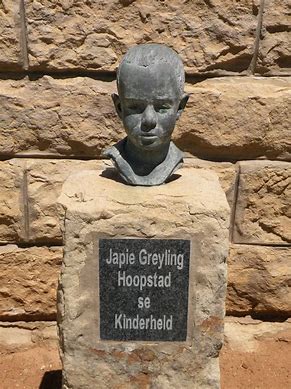
Japie Greyling is the personification of loyalty. Willing to sacrifice his life for his family and for his country. Here is the true story taken from Wikitree:
During the Anglo-Boer War Japie’s father and 2 older brothers went on commando to fight against the British.
One evening in March 1901, Japie’s father’s commando spent the night on the farm. The British were short on their heels. The morning after the commando left the British arrived. Captain JEB Seely found evidence of the commando spending the night. He then saw the 10 year old Japie and demanded he tell them where the commando went.
Japie refused. Capt. Sealy was, however determined to get the information and ordered his troops to let Japie stand against the house’s wall in front of a firing squad. He gave Japie a final chance to give him the information and promised that he would let him go if he told him what he wanted to know. Japie still refused to disclose the information.
Seely ordered his troops to take aim. “Ready!….”….Quietly he ordered them to stop, went to Japie, shook his hand and told him that he would one day like to see him again, and left with his troops.
Credit: https://www.wikitree.com/wiki/Greyling-67
PENKOP EXECUTIONS
The peril of Penkoppe was at times dire. This was particularly the case for any boys that were from the Cape. Despite their age, Penkoppe were executed by the British authorities, with almost all of them sent back to their hometown to be executed in the public square as a public warning!
PIETER’S FAMILY
The Van Zyl (Zijl) family picture. We only ever knew their nicknames as my grandmother remembered them. Two of the siblings (Sarah and Kotie, but it could even be Pieter and Maria) were twins. Credit: Marcelle Eloff (Facebook). Names of the family members are listed below – by Marcelle Eloff.
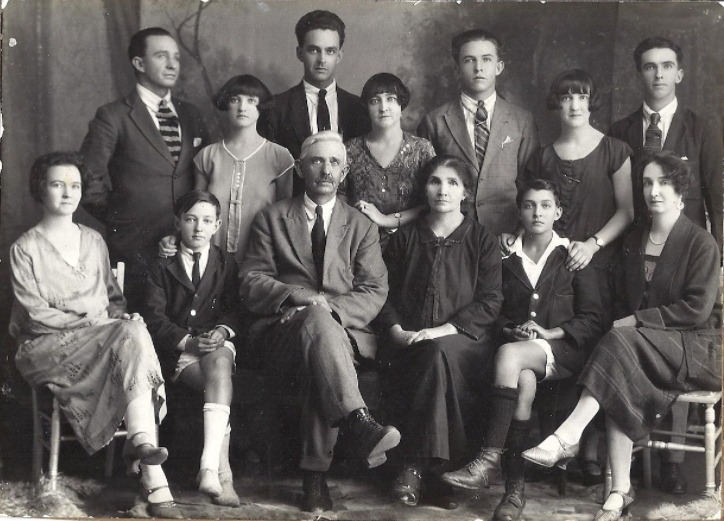
The Van Zyl (Zijl) family picture – From left to right
Front row: Pop (Dinie Magrieta Elizabeth, married Willem Strydom, had 1 daughter Nora),
Boet (Christiaan Burger, married Bunty, had two children),
Johannes Jacobus (his father Pieter Gabriel e5f1),
Dina M E (mother),
Frank (Francois Jacobus, married Dolly, had 1 daughter Anita) and
Mat/Mathilda (Martha Hester Margaretha, married Dan).
Back row: Piet (Pieter Grabbe the Penkop, married Ella Lotter),
Sarah (Sara Susanna, married John Heyneke, had two daughters, passed when her daughters were still young),
Lot (divorced, a name recorded by the English as Lawrence, but he was Lourens Matthys Johannes. He died on the railway tracks),
Babe (Maria Catharina Elizabeth, had no children passed from Cancer),
Jo (Jochemus Johannes, my great grandfather, married G.S. Rautenbach, had 2 daughters, he was a Signalman on the railroads from 1928 until 1965),
Kotie (Johanna Jacoba, had two children) and
Koos (Johannes Jacobus, married Maggie, had 2 daughters).
Not in the picture is Jacoba, who passed at age 6 months during the war. My grandmother was told that one of the children had fallen off the ox wagon. Up to now, we never quite understood what happened and why we had no name. Now we know the sad story of what happened.
My grandmother remembers some of the children’s names, but we have no other information such as birth dates, full names, etc.
Credit names below the photo: Marcelle Eloff (Facebook).
We have recorded the family tree on Ancestry as well as Wikitree. Léon van Zijl Ik stuur je binnekort een bericht.
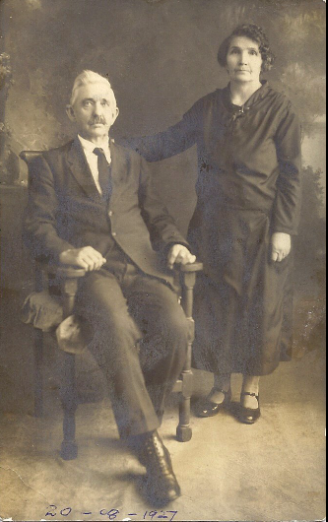
Although Pieter van Zyl was only 12yo, he was fortunate to be in his father’s company (Jacobus Johannes van Zyl) and uncle (Piet G. van Zyl) in the Heidelberg Commando. Pieter mentions that he specifically served under Koporaal Hendrik Durant, Veldkornet Willem Pretorius and Generaal Alberts.
Unfortunately, his mother and siblings were eventually captured (almost 6 months after joining the Commando) and forced into the Heidelberg concentration camp – officially registered on November 1 1901, under her husband’s name as “Mrs Jacobus Johannes van Zijl”. This often made it easier for the enemy to portion fewer rations to those who had active men in the war. His mother (aged 34) and siblings endured the harsh camp life there for a further 16 months until being transferred to another camp – Jacobs Siding on March 3 1902 (peace signed on June 1 1902). Pieter’s mom, known as “Dinie”, was recorded as staying in tent #856.
Credit: Van Zijl Stamboom (Facebook).
Conclusion:
The South African generations of the past had been God-fearing people. They had faith in Him, and they trusted in Him. I am proud to relate to them.
Deuteronomy 6:24
So the Lord commanded us to observe all these statutes, to fear the Lord our God for our good always and for our survival, as it is today
Thank you:
A word of thanks to the Van Zyl (Zijl) Stamboom Facebook Page members, who had spent hundreds of hours researching and updating the records. The information is invaluable to the Van Zyl’s. The story of P.G. – as a Penkop – and the medal he won in the Anglo Boer War makes us all proud.
If you are interested to read more on these events, and the people involved, please visit the Van Zyl Stamboom and Van Zyl Group pages on Facebook:
Public group · 2.3K members
Connecting Van Zyl family members across the globe. but also to link the Van Zyl’s to the ”Suid-Afrikaanse stamouer” Willem van Zijl (x Christina van Loveren). For that, it is important to publish a name and dates (birth) and places. We encourage members to freely share information on the group and hope to facilitate connections.6 unread posts
Private group · 28 members
Familie Stambom van die voor en nageslagte van Frederik en Hester Van Zyl. Nagevors en Dokumenteer deur HH van Schalkwyk

Copyright © 2022 by William Van Zyl
War medal of 12-year-old ‘Penkop’ War Hero – Pieter Grabbe – located in the U.K.
All rights reserved. This book/article or any portion
thereof may not be reproduced or used in any manner
whatsoever without the express written permission of the
publisher except for the use of brief quotations in a book review.
Published by Five House Publishing (New Zealand)
First Publishing, 2022

More eBooks and articles are available at https://fivehousepublishing.com/
More about the author: http://williamvanzyl.com/